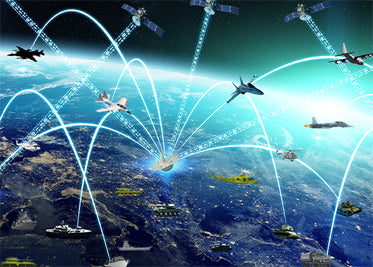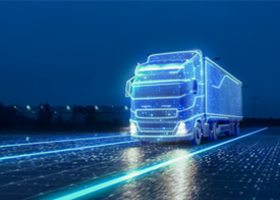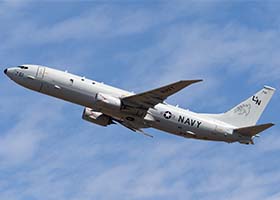
Messtec Drives Automation interviews Martin Stiborski, Managing Director of Bressner Technology and discusses the advantages of AI on the Fly® products from Bressner Technology and its parent company, One Stop Systems.
Rapid technological advances, groundbreaking innovations and an actual need from an economic perspective ensure that artificial intelligence is no longer restricted to research laboratories and supercomputers. Artificial intelligence is the technological driver for the future and is now at the forefront of the further development of companies and entire industries. AI-based content generation is already available, including for e-commerce platforms and multidimensional pattern recognition based on camera and sensor data. Although edge and cloud computing have been proven advantageous for such appliances and scalable concepts have already been implemented, there are fields of applications that rely on even lower latency.
Companies such as BRESSNER Technology and its parent company One Stop Systems are therefore pursuing novel approaches for training AI algorithms. AI on the Fly mixes high-performance GPU-based computing processes with traditional edge computing. While a local edge device sends the data to a decentralized inference machine, training and inference for AI on the Fly takes place on a local level. AI on the Fly therefore provides computing and storage resources for the entire AI workflow, not in the data center, but at the edge near the data sources. Applications for this new AI paradigm are emerging in various areas. These include autonomous vehicles, preventive personalized medical technology, control of defense solutions and industrial automation. The basic similarities of these solutions are the acquisition of high data rates, the storage with high speed and low latency as well as efficient high-performance AI training and inference computing. All of these building block elements are seamlessly connected to the PCI Express system with appropriate memory allocation. It is interconnected and adapted to meet the specific environmental requirements of on-site installations.
AI on the Fly consists of three modular subsystems. Data acquisition, data storage and computing engines. These subsystems support high-speed components such as data acquisition hardware, NVMe SSD storage as well as GPU and FPGA compute accelerators. PCIe interfaces ensure flexible scaling with high bandwidth and low latency. The data acquisition system must be able to absorb the huge amount of data which flows continuously from the sensors. In addition, the data must be processed for efficient transmission, both to the solid-state memory and to the computing modules. The PCIe range of functions enables multiple transfer of data to other subsystems simultaneously using RDMA transfers in order to avoid a system memory bottleneck without additional network protocol latency. The computing features include machine learning tasks, data analysis, deep learning training tasks using neural network frameworks and inference engines using trained models based on new data. Special GPU resources are usually required for each of these elements. AI on the Fly offers all of these elements in flexible building block components that can be easily adapted to the specific requirements of a vehicle developer for autonomous transport. The following figure shows an example of AI on the Fly configurations for autonomous vehicles.

High-speed data acquisition technology is at the front end of these systems. Depending on the application, the data can be generated by a large number of sensors. In autonomous vehicles, data is generated via arrays of video and LIDAR sensors. Radar, sonar, FLIR (infrared) and HF sensors are used in field operations. Medical applications use MRI or CT sensors. In security applications, surveillance camera networks generate large amounts of video data. Industrial automation, on the other hand, includes telemetry data from IoT sensors and video feeds with high frame rates.
BRESSNER Technology works with One Stop Systems and industry leaders to provide technology for autonomous vehicle development programs and high-speed data collection. The development partners rely on the experience of OSS in the development of scalable PCI Express-based systems. These combine sensor data subsystems with high bandwidth, NVMe memory with low latency and high-performance multi-GPUs in special robust form factors. OSS recently announced a joint design win for a large international network transportation company. For its development fleet for autonomous driving, AI on the Fly components were used in 150 vehicles. This fleet is used to collect the data needed to develop and test the artificial intelligence algorithms that will eventually be used in thousands of commercial vehicles. In this case, the "AI on the Fly" data acquisition system is linked to a large number of video, radar and LIDAR sensors in the car. These are combined via redundant 50 Gb/s Ethernet connections to the storage subsystem and are then connected directly to multi-GPU machine learning training systems and inference machines. The entire system is implemented in the trunk of the respective automobile.

To what extent has AI already established itself in automation in Germany?
It is currently foreseeable that customers will increasingly use complementary, integrated technologies to advance their automation projects in 2020. This applies, for example, to technologies such as machine learning, process orchestration, cognitive capture, optical character recognition and advanced analysis methods. This trend has intensified again compared to 2019. However, the biggest challenge right now is the shortage of skilled workers that this growing demand brings.
What are the advantages of RDMA compared to the conventional method using the CPU?
Remote Direct Memory Access (RDMA) is related to Direct Memory Access (DMA) and is particularly helpful for parallel processes in high-performance computers. The method enables data to be transferred directly from the main memory of one computer to the memory of another system. Operating systems, cache or CPU are not loaded, so less hardware resources are required. The result is an outstanding speed compared to other technologies and data transmission protocols, e.g. iSCSI.
What are the benefits for AI applications of distributing the computing operations to a central computer and an edge system?
The biggest problem that has been emerging for some time is the lack of bandwidth to the edge. Upgrading to 5G may initially make sense, but only treats the symptoms of this phenomenon. Our company, together with One Stop Systems, is therefore pursuing new approaches to address the bandwidth problem. "AI on the Fly" mixes high-performance GPU-based computing processes with traditional edge computing. The data conserves the data center and is processed on site, which enormously improves latency times.
How much can the AI on the Fly system be adapted to the application? Where could it reach its limits?
The AI on the Fly systems are generally highly flexible. We deliver anything from finished systems to complete custom designs for areas such as for medical technology, autonomous driving, etc. The limits are usually limited by other influences, since we can react completely flexibly with our products. How much EDGE power is required depends on the application and the environment.
With which products and services does Bressner support customers in terms of AI?
With our experienced sales representatives and FAEs, we naturally attach great importance to advising and searching for the right solution for our customers. We provide free advice right up to the relevant product and, of course, after sales support for topics related to integration or technical questions. On request, customers can even receive a global 24/7 service offer.
Bressner works with OSS, among others. What other projects are planned in a timely manner?
We are gradually expanding our product portfolio to include the existing AI/GPU solutions. As we are very broad in terms of industry, the demand for a wide variety of solutions is constantly growing.
Through our parent company OSS, we also have the opportunity to develop and produce complete solutions and products as OEM / ODM designs. Also, there is always updates to the standard product ranges, such as fanless embedded PCs with integrated powerful GPUs.


According to the American Trucking Associations (ATA), at current trends the driver shortage could surpass 160,000 by 2030. ATA estimates that, in the next decade, the industry will have to recruit nearly a million new drivers into the industry to replace drivers exiting the field due to retirements, driver burn-out, compensation and poor benefits. These are the challenges facing transportation executives in securing a robust driver pool.
However, the challenge of driver shortages does not end with the trucking industry. Rather, the scarcity of drivers directly affects the larger manufacturing sector.
To read the full article click here.
